Entertainment
Sylvester Stallone: From Underdog to Action Hero
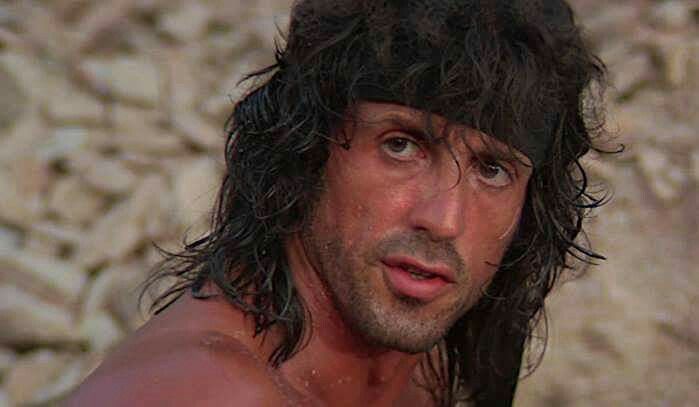
There once was a time when Sylvester Stallone’s name commanded respect as a formidable cinematic talent. His big break in Tinseltown was as a writer. In his first starring role, he earned two Oscar nominations for Best Actor and Best Original Screenplay, as well as a battalion of high praise. Roger Ebert wrote in The Chicago Sun-Times that Stallone reminded him of the young Marlon Brando and favorably compared that performance to Mr. Mumbles’s work in On the Waterfront (1954). Indeed, that movie’s Lee J. Cobb even told a green Stallone that if he could write like Sly did, he would never have been an actor. So, how did Stallone go from being a massively impressive talent during what many consider to be the Golden Age of American cinema to the impressively ripped senior citizen of The Expendables 2? The answer lies in many of Stallone’s own choices and screenplays that oddly, but fittingly, mirror his life. To look back on his body of work is to almost follow his personal life’s own
![]()

narrative and see how this oft-underestimated writer became the poster boy for 1980s machismo. Stallone is a star whose brand has long superseded his work and whose characters have both defined him and constrained him. The most obvious and appropriate of these gilded cages is, of course, that same role that earned him all those platitudes and plaudits…Rocky. But yo, he went the distance. So, let’s revisit that path one more time. Stallone is one of the few people who can say his story literally begins at birth. Born in Hell’s Kitchen in 1946, a young Michael Sylvester Gardenzio Stallone suffered complications exiting the womb. Obstetricians were forced to use two pairs of forceps during his birth and, in the process, accidentally severed a nerve. The medical failure paralyzed the lower left side of Stallone’s face, thereby giving him his trademark snarl and one-of-a-kind slurred accent. It also came to crystallize much of Sly’s scrappy underdog origin story. While I doubt many action fans know that Stallone
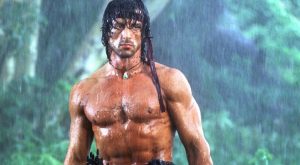
studied acting and writing at the American College of Switzerland or that he dropped out of said school, they can still sense he ended up living around the docks of a major American city like his Italian Stallion. When he returned to the Big Apple in his 20s, Stallone quit acting to dedicate himself fully to the pursuit of writing. He became a true member of the classic New York Bohemian community burdened by the suffering of existence. The man who would be Rambo painted his windows black, developed the lifestyle of a misanthropic night owl, and became determined to recreate the tone of Edgar Allan Poe in his writing. Much like Balboa, he imagined himself to be a sensitive soul often mistaken for a brute. It was also during this period that he was evicted from his apartment and spent three weeks sleeping at the Port Authority Bus Station before he took his first film role…as Stud in the 1970 soft-core porno, The Party at Kitty and Stud’s. The $200 he got for the part allowed him to eat again and eventually find his way to Hollywood.

Returning to acting gave Sly new opportunities, but they also limited him. He was always cast as the muscle or the goon in the background. For his brief appearance in the Woody Allen classic Bananas (1971), he plays a New York thug who robs the neurotic protagonist. Despite getting married during these early years, Stallone still painted his Los Angeles apartment black and continued to plunge himself into esoteric musings about the preconceptions of his hulkish demeanor. His obsessions afforded him the chance to rewrite Lords of Flatbush (1974), a film in which he costarred with Henry Winkler and finally raise some eyebrows in an industry that saw him as little more than Greaser #4. Stallone met with Irwin Winkler and Robert Chartoff in 1975. He gave the two his passion screenplay about a man fighting–in a 1940s professional wrestling ring while struggling with two brothers. The script, entitled Paradise Alley, was viewed as too dark and niche by the two producers. However, Winkler said that
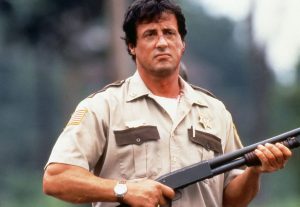
he admired Stallone’s dialogue and asked if he had anything else up his sleeve. As it so happened, the story of an underdog boxer had been ruminating within the actor/writer for months. In March of that year, Stallone saw the shocking heavyweight bout of Chuck “The Bayonne Brawler” Wepner and Muhammad Ali. In the ninth round of the title fight, journeyman Wepner knocked the champ down to the bewilderment of the audience. Sure, Ali got up and won a technical knockout in the 15th round, but the fighter who had 30-to-1 odds against him went the distance. Ignoring that Ali was past his prime during the fight or any of the racial implications of it “inspiring” white viewers, it was still seen as a moment of athletic transcendence; especially for a struggling actor who was never, ever viewed as a contender. Stallone delivered within days an 80-page handwritten draft of Rocky, the script he tailored for himself.
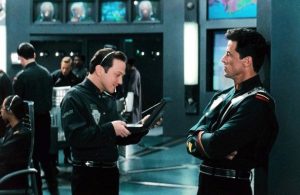
Winkler and Chartoff loved the text and offered to buy it from Sly for $20,000. For a writer with less than $200 in his bank account, that was like hitting the jackpot. But Stallone refused. They incrementally raised their offer again and again until Robert Redford expressed interest in playing the Italian Stallion, thereby putting the number at $200,000. And Stallone still refused. No matter how much money they threw at him, he knew that he literally wrote this role for himself and an opportunity like this would never come again. The producers’ offer got as high as $360,000, but the man who created Rocky Balboa wanted to go the distance. They finally agreed to let Sly play the lead…at $340 a week plus $20,000 for the script. Rocky (1976) is a seminal film for Stallone and the medium at large.
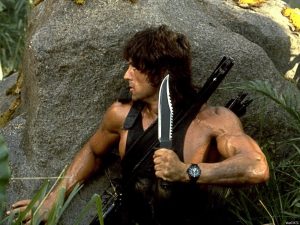
It is the tale of a Philadelphia southpaw who works as a gym rat and makes ends meet by moonlighting as a leg-breaker for a loan shark. He, like Stallone, is a big, well-intentioned bruiser who does things that he regrets for the cash and is written off by everyone as a stumbling Neanderthal. What little dough Rock does scrape up, he uses to romance the shiest of pet store clerks, Adrian (Talia Shire). Adrian is a lot like the boxer himself; everyone she knows discounts her as a weak and worthless girl. She lives with an equally neglected brother, Pauly (Burt Young) who psychologically tortures her so that he can at least not feel like a total loser. Only the self-named “Italian Stallion” can see these lost souls are worth something because he also must be more than the bum his trainer Mickey (Burgess Meredith) writes him off as.

Stallone has said many times that Rocky Balboa is his alter-ego. Indeed, as his career rose and fell, the boxing underdog would likewise suffer and triumph. However, there is something truly innocent and pure about the character. Stallone created him from a place of hunger and yearning as a frustrated talent, but he is the everyman we all see ourselves as. The little guy who deserves more than life has crapped on him. In many ways, Rocky redefined the cinematic underdog story for all time. Practically all sports film made after 1976 follow the formula of this movie. The forgotten Rock gets an unexpected title shot with Heavyweight Champion Apollo Creed (Carl Weathers) by pure happenstance. Apollo needs an Italian Cinderella Man (like the myth around Christopher Columbus) to fill in as boxing fodder for his ’76 Bicentennial rumble in Philly. And Rock, a product of the 20th century American immigrant story (Stallone’s own father was from Gioia del Colle, Apulia, Italy), arbitrarily fit the bill. Yet, he proves he is worth beyond the publicity stunt he was meant to be. He can truly go the distance.

The final scene of Rocky still remains one of the most feel-good movie moments in Cinematic History. Despite being told by Mic to stay down after the champ knocks him on the mat, Rocky gets up for a 15th round and victoriously survives. Unlike other generic sports movies, including Rocky’s many sequels, the underdog doesn’t win. His fight with Apollo is arguably a draw and the champ is awarded the victory by the judges. Still, Rocky proved his worth to himself and the world as being something more than a bum. Ultimately, Rocky isn’t even a sports movie. It’s a story of self-fulfillment and love. Rocky wins true transcendence as he embraces Adrian in the very last frames of the movie. The music, image and characters reach a crescendo which is freeze framed before they can even take that first exhale back towards reality. It is an ending that leaves all audiences on a high and one that ensured it would win the Academy Award for Best Picture and Best Director against competition that included Taxi Driver, Network,and All the President’s Men.
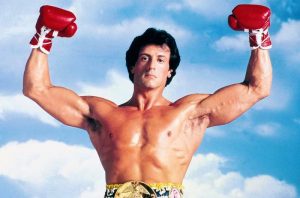
Much like Balboa, Stallone was on a career high that elevated him instantly to the A-list of his industry. Everywhere he turned, there was a friendly face to tell him how amazing he was and that the sky was the limit. But unlike his supposed second personality, it really did seem to go to Sly’s head. Stallone’s first major effort after Rocky was his long gestating passion project, Paradise Alley (1978). When I say passion, I mean everything about the film was Stallone. He wrote the screenplay for the dark character drama set in his parents’ New York neighborhood of hell’s Kitchen during the ‘40s. He stepped behind the lens for his first directorial effort. Obviously, he starred as Victor, a down-and-out hustler in a family of hustlers who break into professional wrestling at the cost of their souls. Hell, he even hilariously sang the opening scene’s title song, “Too Close to Paradise” like a late-era Elvis Presley ballad crooned after the King was out on an all-night bender.

Stallone’s second semi-autobiographical drama about another contender was a critical and box office failure that left Sly ready to return to the boxing ring for Rocky II. Rocky II fulfilled the promise of the original’s ending by having the southpaw from Philly beat Apollo in a rematch. It also commented on Rocky’s newfound fame and reflected Stallone’s own discomfort with notoriety. That was clearly gone by Rocky III (1982). Six years after Rocky went the distance all the way to the Academy Awards, Stallone had become pigeonholed in sports films. He starred in the John Huston head-scratcher, Victory (1982), in which he played a POW game of soccer with Michael Caine and Pelé against the Nazis in wartime Paris. By the time he completed his “Rocky trilogy” to the tune of “Eye of the Tiger,” Rocky as a character had become kitschy. Like Stallone, fame had gone to his head and he was in a professional rut. By the film’s end,
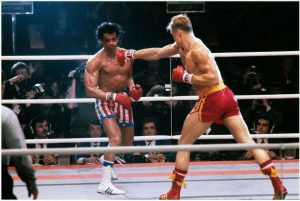
an Apollo-trained Rocky is able to defeat Mr. T in the ring and overcome the softness of fame (though real-life Stallone got his body fat down to the unhealthy level of 2.8 percent for the role). But, as the presumably retired hero rode off into the sunset, his reality was nothing like Stallone’s. The need to have a hit and another signature role far surpassed his creative intentions of the 1970s. Sly was no longer a writer with something to prove, but a creative gun for hire looking for a new image away from the arena. He wrote and co-starred with Dolly Parton in Rhinestone (1984), a country musical about Dolly getting his character into the genre. Sly also directed and wrote the Saturday Night Fever sequel, Staying Alive (1983). He photographed John Travolta’s frequently unclothed body in the film with the same idol worship he’d shown his own in the Rocky sequels. Stallone had hit a creative wall and could not find a new way to artistically express himself until a new icon emerged. This next role would define his career more than the Philly brawler ever could.

During the Vietnam War, David Morrell became a professor of American Literature at the University of Iowa. Between 1970 and 1972, he saw an influx of students who had returned from Vietnam scarred with what is now known as Post Traumatic Stress Disorder (PTSD). Many of them questioned his authority in the classroom and American culture at large. After interviewing many of them, Morrell went on to write the 1972 novel First Blood. It was a brooding and cynical account of a Vietnam vet named John Rambo who has a mental breakdown and shoots up a small American town. The movie rights were sold immediately and just as quickly shelved when the Vietnam War finally came to an end. The script, like the war, was swept under the rug of pop culture. By the early 1980s, Vietnam reared back up in Hollywood with heavy hitting psychodramas like The Deer Hunter (1978) and Apocalypse Now (1979).
Rambo First Blood (1982)
Suddenly, it was O.K. to talk about the most painful foreign policy mistake in American history. First Blood was on the table again and after several drafts, it found its way beneath Sylvester Stallone’s pen. His first instinct was to tone down the violence. In the earlier drafts, written over the previous seven years, Rambo’s rampage was a bloody affair during which he killed 18 civilians like target practice on Parris Island. In Stallone’s draft, Rambo became more of a confused and tortured soul who didn’t know what to do with his life. The only man he kills in the whole film is partially responsible because he didn’t have a safety belt on as he was shooting at the anti-hero from a chopper. One could argue that the movie First Blood (1982) depicts the Vietnam veteran as a more sympathetic victim of the American government than its source material.

One major change is the ending. Stallone’s acting idol, Kirk Douglas, was originally cast in the crucial supporting role of Col. Sam Trautman. In the original ending to the movie, like the book, the colonel executes the monster that he created by putting a bullet in Rambo’s head. During production, Stallone realized telling vets that death could be the only possible ending to their suffering was cruel and inappropriate. He rewrote it so that Rambo is arrested and taken away to find salvation. Douglas was infuriated by this ending and argued that Rambo dying was the only artistically authentic conclusion. Stallone still changed the finale and Douglas promptly left the set and was replaced by Richard Crenna. Years later, Douglas met up with Stallone and said, “My ending’s still better.” He also conceded it would have cost Sly a billion dollars. Douglas is likely right that the tragic tone of First Blood would have been better served by a grimmer ending.

But the change also signaled a shift in Stallone’s career, one that did not require artistic integrity, but instead championed beefy heroism. Because, like Rocky, we would see John Rambo many more times and (also like Rocky) he’d become a superhero serial for the Reagan years. If Rocky Balboa’s zeitgeist appeal came from post-Vietnam, post-Watergate American audiences wanting to rally around the little guy (after all, they elected a peanut farmer as President in the same year), Rambo and the brawny action heroes he spawned became a product of Reagan Era jingoism. As much as Stallone claims to view his characters as nonpolitical, Reagan himself made the connection countless times. The U.S. president likened his handling of Congressional Democrats over tax cuts in 1985 to how Rambo took care of business in Rambo: First Blood Part II (1985). In that movie, Rambo is dropped off, again, into Vietnam and gives Americans the ending they know they deserve! hell yes,
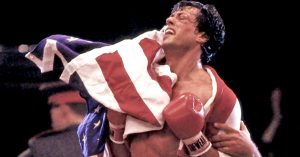
Rambo single-handedly refights and wins the Vietnam War a year after “Morning in America” and Reagan’s 49 state reelection victory! The president even invited Stallone and his new fiancé to the White House after the film’s release. Following the 1985 TWA hostage crisis in which Lebanese terrorists hijacked a plane with over 150 passengers and flight crew (most of whom were American), President Reagan famously remarked, “Boy I saw Rambo last night. I know what to do the next time this happens!” Stallone, more than Arnold Schwarzenegger, Chuck Norris or any of the other meathead action stars of that decade, created the cinematic Übermensch whose muscles alone were enough to mow down entire Third World armies. Even Rocky Balboa got in on the action with Rocky IV (1985). With his fourth outing, Rocky travels to Soviet Russia to defeat a 7-foot tall, doping Soviet Aryan(?) demigod played by Dolph Lundgren and avenge the death of Captain America—er, Apollo Creed.
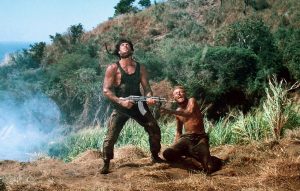
Though Rocky and Apollo discuss frequently how he can only go a few rounds in his middle age during Rocky III, the southpaw somehow goes 15 with the Ruskie Goliath and wins! He even gains the love of the anti-American crowd and gives a “Yo, détente” speech that more or less ends the Cold War by the time the credits roll. The most absurdly brilliant of these “Team America” love letters remains Rambo III (1988). In the final Rambo flick of the Reagan years, Sly’s protagonist is forced out of his Zen-like Thailand retreat by Trautman and goes into Afghanistan to team up with the Mujahideen and kill those damned Russians! Factions of the Mujahideen later became the modern Taliban that Americans now struggle with in our own Afghan War. The final shot of Rambo III dedicates the film to “the brave Mujahideen fighters of Afghanistan”….yeah. There is no denying that Sylvester Stallone carved out an amazingly lucrative niche for himself and a whole generation of men who would be action icons.

Unfortunately, when one so thoroughly brands himself as Mr. Pecs and Bullets for a brief moment in American pop culture, the blowback after that era ends can be enormous. Near the end of the ‘80s, Reagan optimism became subdued by the 1988 Recession. Hollywood fads were also moving on with new action stars like the very un-ripped, but visciously witty Bruce Willis in Die Hard (1988) while Michael Keaton used a rubber suit for his muscles in Batman (1989). In the end, the rah-rah patriotism of the mid-80s couldn’t last forever. In 1990, as the Cold War hung by a thread that Gorbachev intended to cut, Rocky V crashed and burned at the box office. Sly went on to have some creative and financial successes during the 1990s. He did “Die Hard on a Mountain” with the vertigo-rush that was Cliffhanger (1993). The same year’s Demolition Man is wacky fun with a deliriously prophetic dig at Schwarzenegger’s future political ambitions (time traveling Sly groans when he learns that Arnie went into politics and ultimately became president).

But overall, he was simply following trends. He did a lousy buddy cop comedy with Kurt Russell in Tango & Cash (1989) and an erotic thriller with Sharon Stone in The Specialist (1994). He played one of the worst superheroes of all time with Judge Dredd (1995) and even aped Schwarzenegger’s family comedy formula in the legendarily awful Stop! Or My Mom Will Shoot (1992). The days of Rambo seemed over and all that was left was the bloat that Stallone’s own writing forewarned and mocked in Rocky III. If his alter-ego always persevered, Stallone looked like he was drowning and no one in Hollywood wanted to swim too close by the end of the ‘90s. Fortunately, the period left Stallone hungrier than he had probably been since he got Rocky and Paradise Alley produced. He ended the decade by surprising audiences with the talent Ebert once trumpeted 20 years prior. For Cop Land (1997), Stallone took a paycheck of only $60,000 and added 41 pounds of carbs to his frame.

France-Sylvester-Stallone
In the James Mangold film, he played a small town New Jersey sheriff with a hearing disability (not unlike Stallone’s real-life paralysis) who polices tough NYPD detectives played by acting legends Harvey Keitel, Robert De Niro and Ray Liotta. Similar to real life, the other members of Stallone’s profession look down on him as a lightweight and a pretender. Thus when Keitel’s dirty drug schemes come across the river, Sly has something to prove to them and his own soul. While even Stallone would not say he is on the same level as these titans, it was a moment of meta-theatre that reminded audiences and critics alike that there was a reason this muscular Italian-American with a slur became a star in the first place. By the 2000s, Stallone was relegated to awkward sports dramas and direct-to-video actioners.
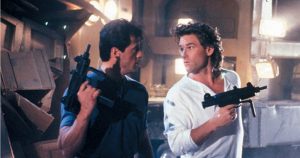
As it turns out, there was more distance to travel. It seemed like the perfect time to resurrect the Italian Stallion. And just like the 1970s, nobody wanted a part in a Rocky movie that starred the un-hip Sylvester Stallone. It took him six years to get Rocky Balboa (2006) produced. The supposedly final Rocky film (there could still be a hater in need of a beating in his nursing home down the road) gloriously revisited its 1976 roots by taking away the frills and excess of the 1980s. There are no talking robots, James Brown musical numbers or political messages to be sniffed here. It’s just the story of a 60-something Rocky who has to prove he is still worth a damn to a generation that couldn’t care less. Yet again like Stallone, Balboa had something to say about aging in the spotlight, except with a lot more grace than his real life counterpart.
Rocky 6 (2006)
Rocky Balboa was a substantial hit for the actor with an audience ready to embrace 1980s nostalgia. Seeing the $150+ million worldwide returns, Stallone quickly decided it was also time to bring John Rambo back for a “final time.” Rambo (2008) was not as critically well received as “Rocky VI,” but the fourth Rambo adventure still won over massive audiences who wanted to see Stallone kill every member of the Burmese military regime in Myanmar. Rambo reasserted the burly action hero renaissance we currently live in. Stallone wrote, directed and starred in The Expendables (2010), the Avengers of aging 1980s action stars.
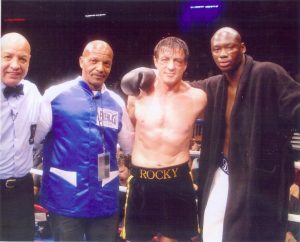

You may like
Entertainment
The Ultimate List of the Best Action Movie Hero Names
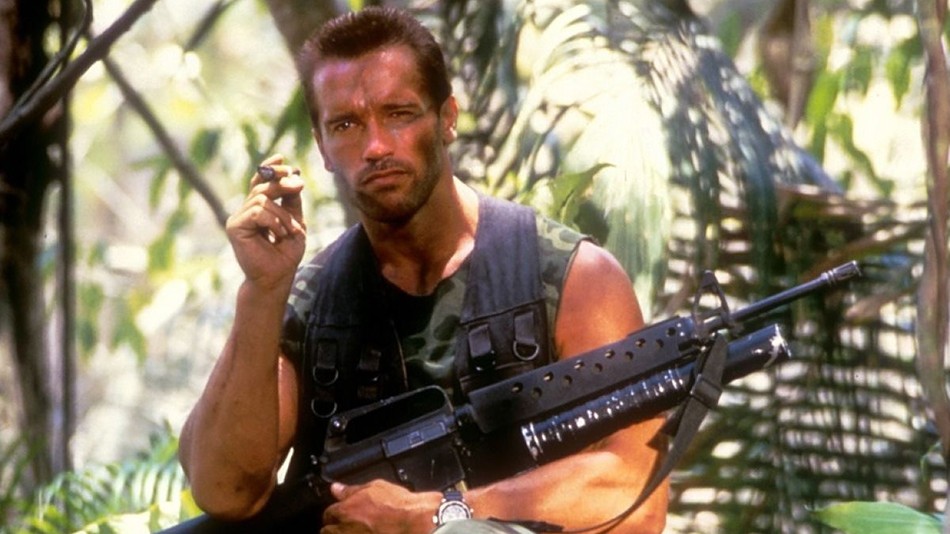
Arnold Schwarzenegger (aka “Arnie”, “The Austrian Oak”, or “The Govenator”) is an ultimate action movie legend of the first class. Both a former Mr. Universe and Mr. Olympia champion bodybuilder and former Governor of California, Arnold has risen to the highest levels of worldly success.
Born in Thal, Styria, Austria, Arnold made his breakthrough into Hollywood action movies originally in sword-and-sorcery with Conan the Barbarian and in sci-fi with The Terminator, early roles which let him hide his thick accent and lack of American acting experience.
However, Arnold quickly found his niche and would go on to helm some of the most critically and commercially successful action movie blockbusters of all time. Including Terminator 2: Judgement Day and the Terminator Series, Commando, Predator, Total Recall and True Lies to name a few. While he has eased up in later years to pursue public office, his legacy remains Arnold strong!
Watch more Arnold Schwarzenegger clips here!
Arnold Schwarzenegger Articles
Entertainment
American Ninja 4: The Annihilation (1991) Biography, Plot, Trailer
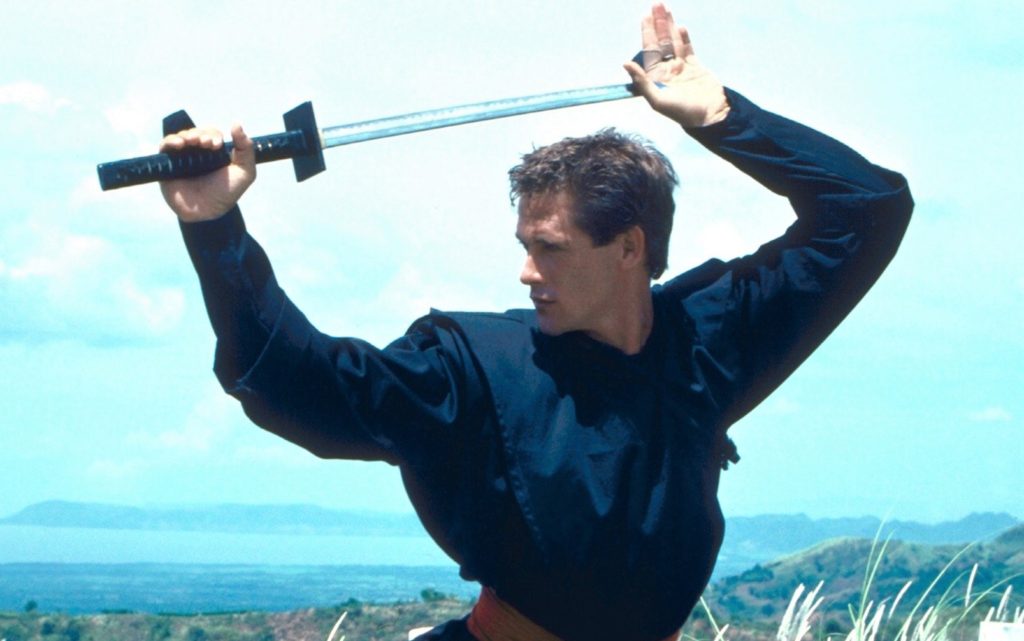
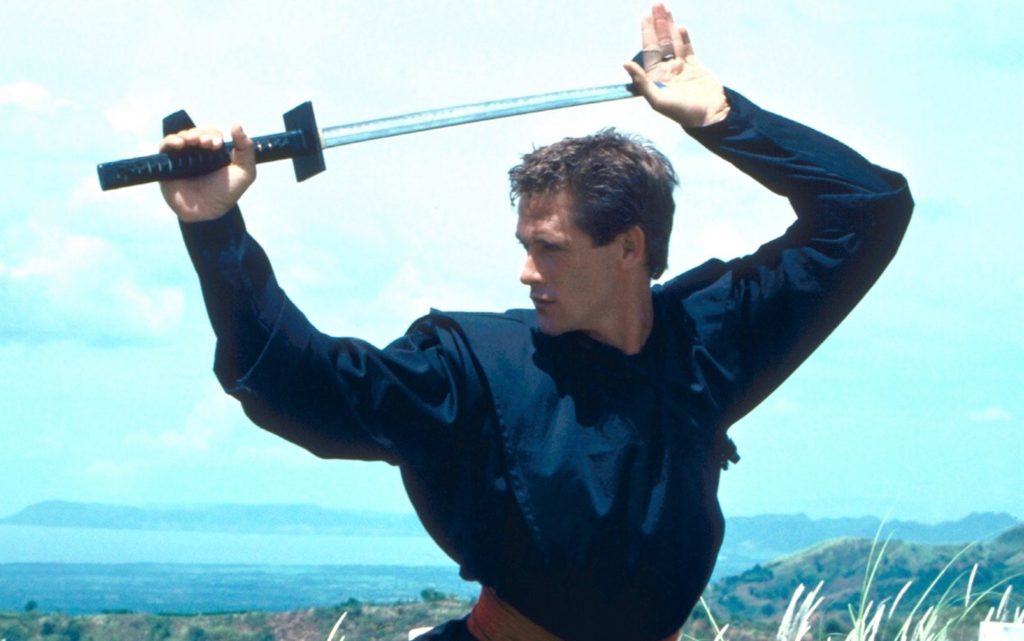
American Ninja 4: The Annihilation (1991)
American Ninja 4: The Annihilation is a 1991 American martial arts action film starring Michael Dudikoff, David Bradley, and James Booth. A sequel to American Ninja 3: Blood Hunt (1989), it is the fourth installment in the American Ninja franchise, followed by American Ninja V and was directed by Cedric Sundstrom. The film marked Michael Dudikoff’s final appearance in the American Ninja franchise.
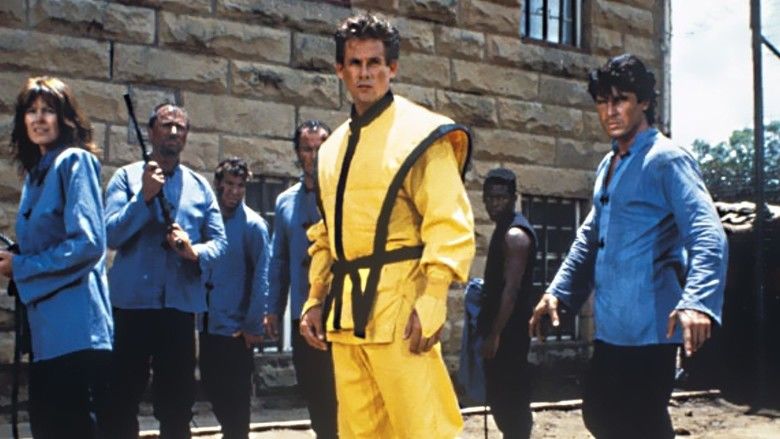
Plot
A Delta Force unit attempts to escape from a pursuing group of ninja in a foreign country but most are killed and the rest are captured. The secret Ninja Army is headed by Colonel Scarf Mulgrew) an ex-British policeman and anti-American who has joined with Shiekh Ali Maksood, a Muslim militant, who plans to bring a suitcase nuke to New York. Mulgrew threatens to burn the commandos alive and use the nuke unless he is paid a ransom of 50 million dollars. Agents Sean Davidson and Carl Brackston are sent on a covert mission to rescue the prisoners and defeat the terrorists.
RELATED:
New York Ninja (2021) Biography, Production, Release, Trailer
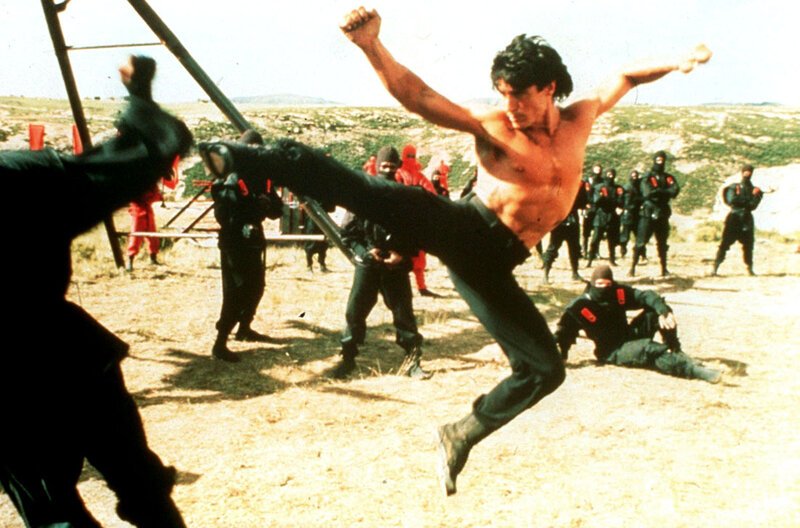
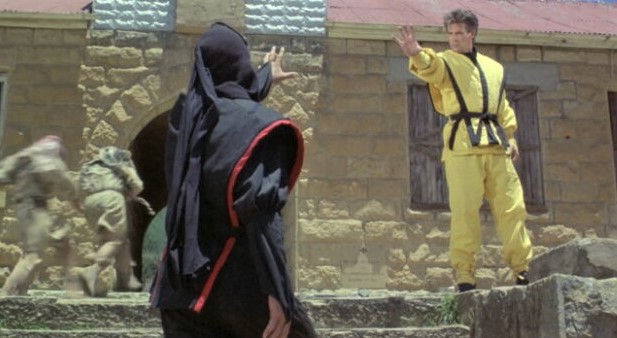
Cast
- Michael Dudikoff as Agent Joe Armstrong
- David Bradley as Agent Sean Davidson
- Dwayne Alexandre as Agent Carl Brackston
- Robin Stille as Dr. Sarah[3]
- Ken Gampu as Dr. Tamba
- James Booth as Colonel Scarf Mulgrew
- Ron Smerczak as Shiekh Ali Maksood
- Frantz Dobrowsky as Captain O’Reilly
- Kely McClung as Super Ninja
- Jody Abrahams as Pango
- Anthony Fridjhon as Freddie / Treddle
- David Sherwood as Gavin
- Sean Kelly as Norris
- Jamie Bartlett as Segal
- John Pasternak as Carlos
- Robin B. Smith as Schultz
- Shane Safi as Little Special School Child
The post American Ninja 4: The Annihilation (1991) Biography, Plot, Trailer appeared first on martial-arts-viral-news.
Entertainment
Will Smith CONFRONTS Jim Carrey For HUMILIATING Him On Live TV
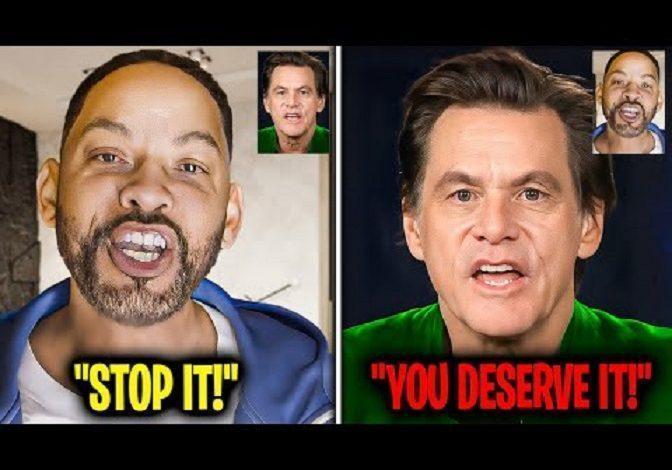
Get ready for the ultimate showdown! In this explosive video, Will Smith confronts Jim Carrey after being publicly humiliated on live TV.
![]()
The two Hollywood legends have a long-standing rivalry, but things came to a head after Jim’s controversial comments about Will during an interview.
With tensions running high, Will finally has the opportunity to confront Jim face-to-face and demand an apology.
But will Jim be able to make amends for his insulting remarks, or will this confrontation only escalate the feud further?
Watch now to find out!
Here on Just In we are all about the latest spill in Hollywood! You can rest assured that we will bring you all the latest celebrity drama and gossip especially concerning your favorite actors! We´ll also make sure to keep you updated on the newest movie updates and releases – so if you are interested in anything that happens in Hollywood, you should make sure to stay tuned!
And there you have it guys! We hope you enjoyed the video! If you did please consider leaving a like and telling us what you thought in the comments!
But will Jim be able to make amends for his insulting remarks, or will this confrontation only escalate the feud further?
Watch now to find out!


‘I am officially off the market’: When Margot Robbie revealed she made the ‘conscious’ decision of not dating actors

Monica Bellucci and Tin Burton at lunch in the restaurant in Selci Lama

‘Rocky’ Was Quite Different In His Original Screenplay, Sylvester Stallone Claims
In Sherlock Holmes 3, Johnny Depp will be the villain at Robert Downey Jr.’s request !
Arnold Schwarzenegger, Sylvester Stallone and Jean-Claude Van Damme Training Motivation

Expend4bles trailer: Megan Fox the gun-toting femme fatale romps around in bed with Jason Statham in R-rated instalment of Sylvester Stallone’s explosive franchise
Trending
-
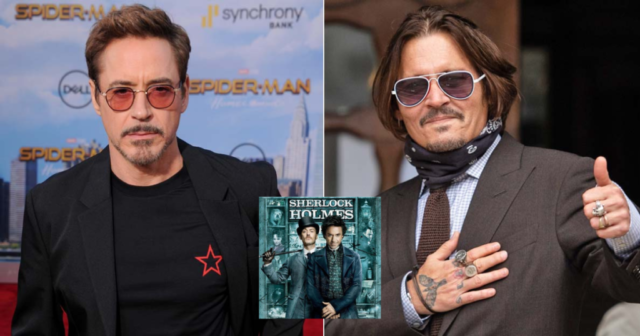
 Entertainment2 years ago
Entertainment2 years agoIn Sherlock Holmes 3, Johnny Depp will be the villain at Robert Downey Jr.’s request !
-
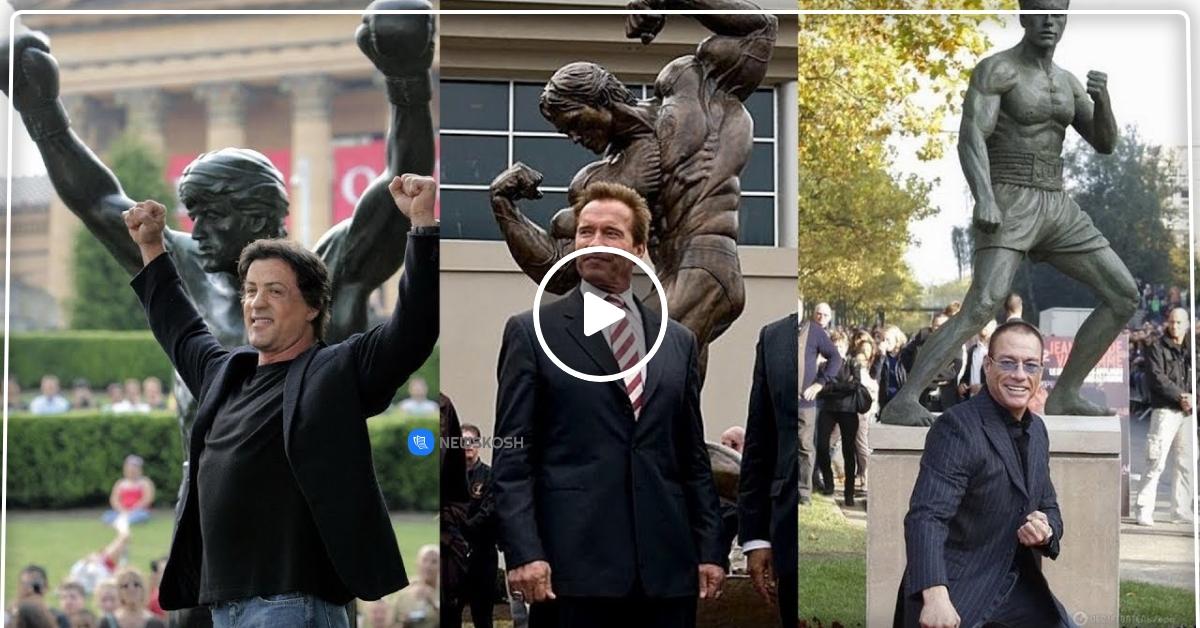
 Entertainment2 years ago
Entertainment2 years agoArnold Schwarzenegger, Sylvester Stallone and Jean-Claude Van Damme Training Motivation
-

 Uncategorized11 months ago
Uncategorized11 months agoExpend4bles trailer: Megan Fox the gun-toting femme fatale romps around in bed with Jason Statham in R-rated instalment of Sylvester Stallone’s explosive franchise
-
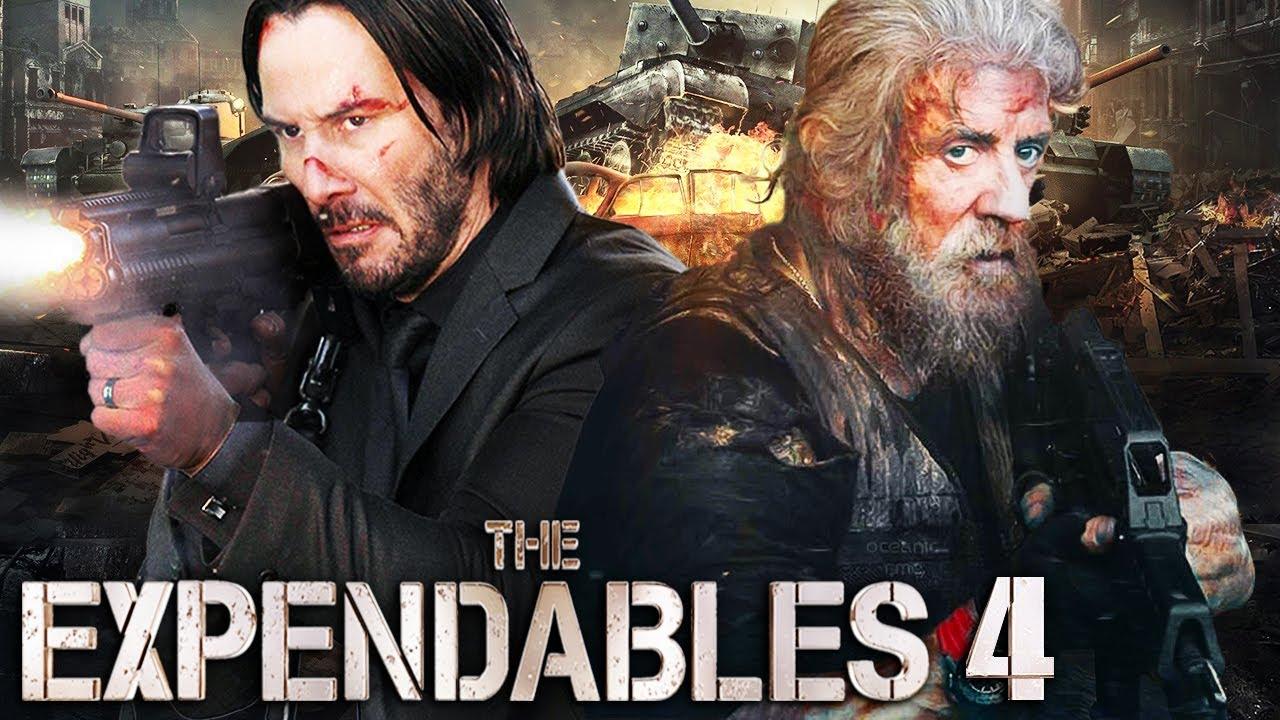
 Entertainment1 year ago
Entertainment1 year agoTHE EXPENDABLES 4 Leaked Information + Crazy Theories
-
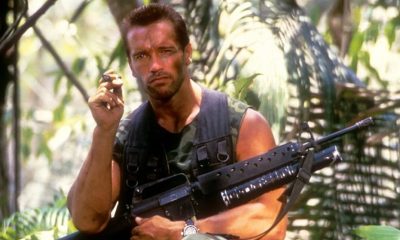
 Entertainment12 months ago
Entertainment12 months agoThe Ultimate List of the Best Action Movie Hero Names
-

 Uncategorized9 months ago
Uncategorized9 months agoSelena Gomez, worried about the relationship between Taylor Swift and Travis Kelce
-
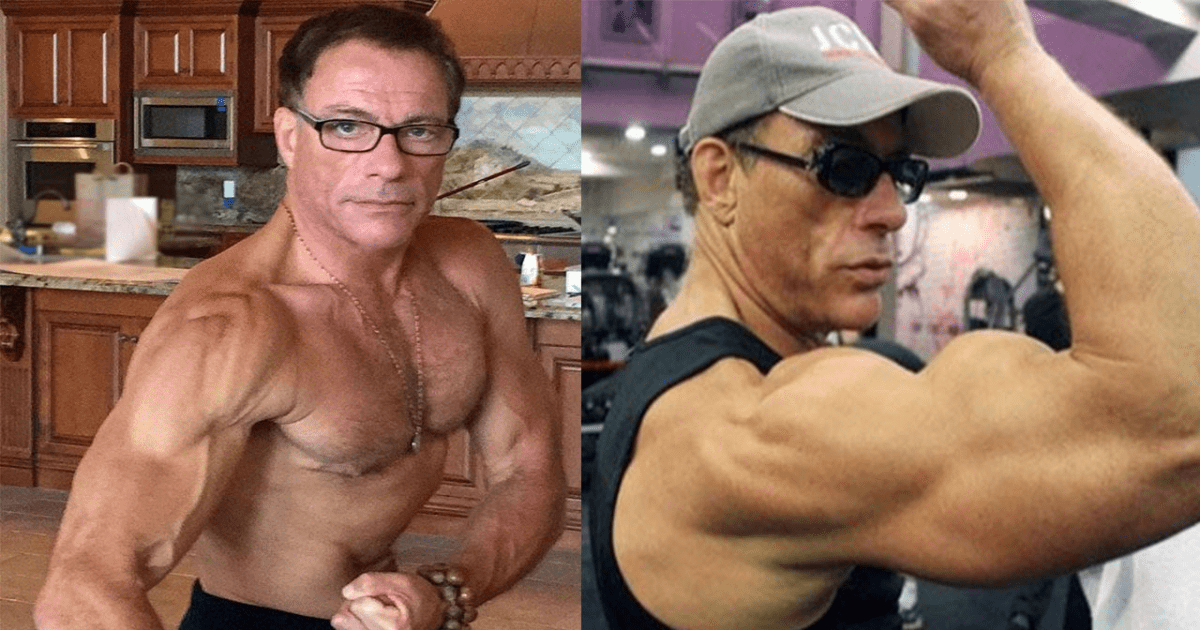
 Uncategorized1 year ago
Uncategorized1 year agoJean-Claude Van Damme To Retire, Reveals Final Movie Role
-
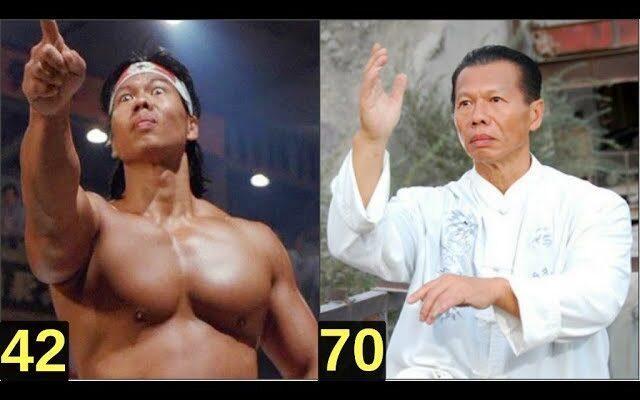
 Uncategorized1 year ago
Uncategorized1 year agoBolo Yeung (2023) From 23 To 71 Years Old

